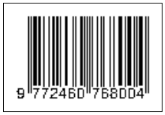Penggunaan Metode Ontology Untuk Perancangan Purwarupa Sistem Smart Home Berbasis Context Aware
Guntur Perdana(1*), Ahmad Ashari(2)
(1) Prodi Elektronika dan Instrumentasi, FMIPA UGM, Yogyakarta
(2) Departemen Ilmu Komputer dan Elektronika, FMIPA UGM, Yogyakarta
(*) Corresponding Author
Abstract
Smart home system is a computer-aided system that will provide all comfort, safety, security and energy savings, which works automatically and programmed through a computer in a building or home. One of the method that can be used to design smart home is context aware method. Context aware can work with the help of several other methods such as ontology method.
Ontology has a variety of definition and always changes time by time. Ontology method is one of method that can process complex data. The ontology method allows complex reasoning and representation with better results. Constraints that are often encountered when designing a system that looks complex will face many problems such as many ambiguous domains.
The existence of an ontology design before carrying out the prototype design of the smart home system will facilitate the smart home design process especially if the system will be made more complex so it would allows ambiguity from multiple domains. Testing with this ontology method is effective enough to minimize ambiguity from each domain, because each domain is designed with different characteristics. The results of the test concluded that the ontology design can be realized as a prototype of the smart home system.
Keywords
Full Text:
PDFReferences
[1] F. Behmann dan K. Wu, “Application Requirements,” in Collaborative Internet of Things (C-IoT):for Future Smart Connected Life and Business, 2015.
[2] K. Wongpatikaseree, M. Ikeda, M. Buranarach, T. Supnithi, A. O. Lim, dan Y. Tan, “Activity recognition using context-aware infrastructure ontology in smart home domain,” Proc. - 2012 7th Int. Conf. Knowledge, Inf. Creat. Support Syst. KICSS 2012, hal. 50–57, 2012.
[3] J. Zhao dan L. Lü, “Smart home model based on ontology and context-awareness,” 2008 IEEE Int. Conf. Granul. Comput., hal. 830–833, 2008.
[4] A. Dewabharata, D. M. H. Wen, dan S. Y. Chou, “An activity ontology for context-aware health promotion application,” Proc. - Int. Comput. Softw. Appl. Conf., hal. 421–426, 2013.
[5] A. Patel dan T. A. Champaneria, “Fuzzy logic based algorithm for Context Awareness in IoT for Smart home environment,” 2016 IEEE Reg. 10 Conf., hal. 1057–1060, 2016.
[6] Q. Ni, A. B. García Hernando, dan I. P. De La Cruz, “A Context-Aware System Infrastructure for Monitoring Activities of Daily Living in Smart Home,” J. Sensors, vol. 2016, 2016.
[7] Y. F. Badron, F. Agus, dan H. R. Hatta, “STUDI TENTANG PEMODELAN ONTOLOGI WEB SEMANTIK ARTIKEL JURNAL ILMIAH,” vol. 2, no. 1, 2017.
[8] L. E. Nugroho, L. Lazuardi, dan K. Non-alinsavath, “Ontology-based Context Aware for Ubiquitous Home Care for Elderly People,” Proc. 2015 2nd Int. Conf. Inf. Technol. Comput. Electr. Eng. (ICITACEE), Indones. Oct 16-18th, hal. 454–459, 2015.
[9] H. Guermah, T. Fissaa, H. Hafiddi, M. Nassar, dan A. Kriouile, “An Ontology Oriented Architecture for Context Aware Services Adaptation,” vol. 11har, no. 2, hal. 24–33, 2014.
[10] Y. Wu dan G. Bao, “A method of semantic annotation and ontology construction for unified command and control language,” Proc. - 2013 10th Web Inf. Syst. Appl. Conf. WISA 2013, hal. 415–418, 2013.
Article Metrics
Refbacks
- There are currently no refbacks.
Copyright (c) 2019 IJEIS (Indonesian Journal of Electronics and Instrumentation Systems)

This work is licensed under a Creative Commons Attribution-ShareAlike 4.0 International License.
View My Stats1







